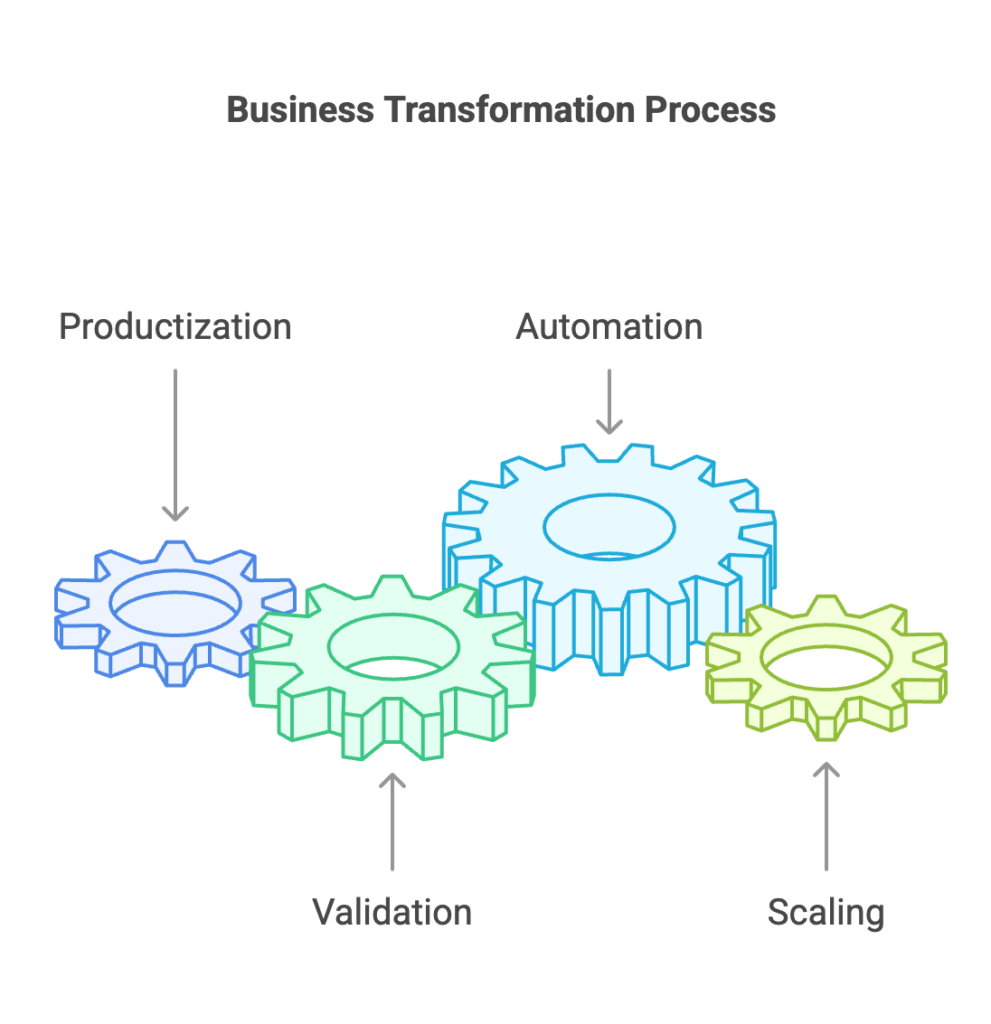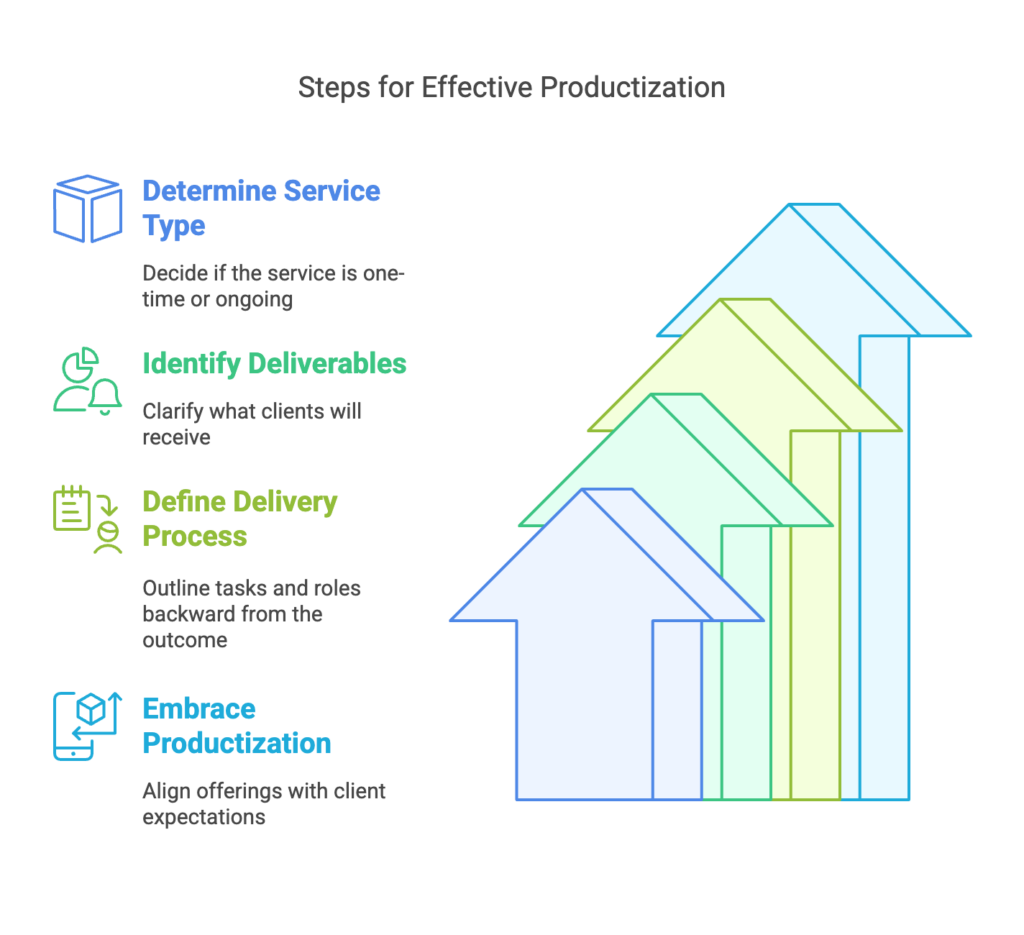Systematize Your Business in Four Weeks: A Proven Roadmap to Success

Welcome to a transformative journey that promises to reshape the very foundation of your business in just four weeks. Imagine moving from chaos to a streamlined, profitable, and scalable operation that doesn’t just survive but thrives across changing market conditions. This roadmap is based on real-world success stories, like one business that skyrocketed to over $100,000 in monthly profit by applying these principles.
Unlock the Potential of Systematic Transformation
Running a business often feels like juggling too many balls at once, with no clear idea which one might drop next. If you’ve been feeling that your business is more reactive than proactive, you’re not alone. The key is to shift from being unpredictable to a model that’s easily replicable and scalable.
- Week 1 – Productization: Start by transforming your unstructured services into standardized offerings. This is the foundation of a scalable operation.
- Week 2 – Validation: Find a lead generation channel that provides a consistent return on investment, ensuring a steady flow of potential clients.
- Week 3 – Automation: Implement smart automation tools that can significantly reduce manual work and let your team focus on strategic growth.
- Week 4 – Scaling: Use your streamlined systems to leverage growth opportunities, reinvesting profits into the most fruitful channels.

Real Stories, Real Success
This roadmap isn’t just theoretical. It’s grounded in tried-and-true strategies that have been successfully adopted by businesses looking to break free from stagnation. Take the example of a business that was once struggling and is now achieving upwards of $100,000 in monthly profits. The transformation involved strategic steps, careful planning, and staying committed to the process.
The journey may seem daunting, but if you stay committed to these strategies, you’re aligned with a path that can transform your business landscape in unprecedented ways. Let’s embark on this journey of making your business not just better, but exceptional.
Week 1: Productization
What exactly is productization, and why is it so crucial?
Productization is the process of transforming unstructured services into standardized, repeatable offerings. Think of it as packaging your expertise into a neat, predictable product that your clients will easily understand and buy.
Steps to Productize Your Services
- Transform and Define: Start by adding a price, time constraint, and defining clear deliverables. For example, instead of “helping with marketing,” offer a “four-week Facebook ad campaign generating 100 leads for $4,875.” This clarity turns ambiguity into an easy-to-digest package.
- Marketing Example: Transform vague offers like “helping with marketing” into something tangible such as “a four-week Facebook ad campaign that generates 100 leads for $4,875.”
- Consulting Example: Swap out “help with strategy” for a precise “90-day roadmap to double revenue for $3,500.” Giving your services this clarity and structure makes them more compelling to potential buyers.
Steps for Effective Productization
- One-Time vs Ongoing: Determine if your service is a one-time or ongoing offering. This distinction helps in setting appropriate expectations and pricing.
- Identify Deliverables: Clarify what clients will receive. Tangible deliverables allow clients to visualize the results, making it easier for them to justify the investment.
- Define Delivery Process: Work backward from the desired outcome to outline tasks and roles. This process ensures all parties clearly understand the journey from start to finish, improving efficiency and satisfaction.

Embracing productization aligns your offerings with client expectations, enhancing scalability and profitability. By making your services repeatable and predictable, you position yourself as a trusted partner ready to deliver results, turning your expertise into a formidable force for growth.
Week 2: Validation
In the second week of transforming your business, it’s time to focus on validation. Validation involves finding a scalable lead generation channel that consistently yields a predictable return on investment (ROI). This step is essential in ensuring that your business can grow sustainably and with certainty.
Steps to Achieve Validation
Here’s a roadmap to guide you through this crucial phase:
- Test Multiple Lead Generation Channels: Start by experimenting with different avenues such as cold email campaigns, paid advertisements, or freelancing platforms like Upwork. Each channel offers unique potential, and the goal is to identify the one that resonates most with your target audience and business model.
- Monitor Performance through Key Metrics: Keep a close eye on how each channel performs. Track metrics like open rates for emails, cost per lead, and overall ROI. These figures are your compass, guiding you toward the most effective strategy.
- Evaluate and Commit: Once you’ve gathered enough data, evaluate which lead generation channel has been the most successful in terms of ROI. Commit to this channel, refining and optimizing your approach to maximize its effectiveness.
Embrace a Data-Driven Approach
This stage is all about embracing an experimental and data-driven mindset. Don’t hesitate to pivot or tweak your approach based on the results. Your ability to adapt is key in discovering the best fit for your business.
Gain Insights with Personal Understanding
As you navigate through this process, it’s crucial to gain a deeper understanding of your market’s lag time. Recognize the natural delays that occur between efforts and results. Use this insight to iteratively improve your methods, ensuring alignment with your market’s rhythm.
By successfully validating your lead generation channels, you’re laying a strong foundation for growth. This week sets the stage for the next steps in your business transformation journey, allowing you to build with confidence.
Week 3: Automation
Jumping into Week 3, we shine a spotlight on automation—a cornerstone for any business looking to grow efficiently. Automation doesn’t merely make things easier; it makes your entire operation smarter and more resilient.
Why Automation Matters
Introducing efficiency through automation is like giving your business a set of invisible hands that manage repetitive work, freeing you to focus on high-impact activities. It’s not about cutting corners; it’s about being strategic with your resources.
Steps to Effective Automation
1. Self-Reflection
Start with understanding your day-to-day operations. Meticulously log your daily activities for a week. This step isn’t just about gathering data; it’s about gaining insight into the inner workings of your business.
- Identify what’s unnecessary, what’s automatable, and what’s truly high-value. By seeing where your time actually goes, you can make informed decisions about where automation would be most beneficial.
2. Categorize Tasks
Once you’ve documented your activities, it’s time to categorize:
- Unnecessary: Tasks that don’t add any value should be retired.
- Automatable: These repetitive tasks are ripe for automation. Tools like Make or Zapier can become your best friends here.
- High-Value: The tasks that make a difference—focus your personal efforts here.
3. Streamline Systems
After identifying tasks for automation, it’s about designing systems that support these processes. Set up automations in a way that they’re flexible, yet robust, making sure they’re aligned with your business objectives.
Boosting Personal Efficiency
Automation doesn’t just mean automating business tasks—it’s about bolstering your personal productivity too. Build habits and systems that keep you accountable, especially those tied directly to revenue-generating activities.
This approach ensures you aren’t just a cog in the wheel but an active driver of business success.
Remember, automating wisely isn’t about becoming less human; it’s about using technology to allow humans to do what they do best—create, innovate, and elevate business to new heights.
AI & Process Automation Consulting
Build your company into a rocket ship
We’ll offer you weekly consulting services for AI and process automation so that you can be the master of your own bridge. Start your AI automation journey today.

Week 4: Scaling
As you step into the final week of transforming your business, it’s time to focus on scaling. This week is all about leveraging the efficient, streamlined systems you’ve developed over the past three weeks to drive growth and expansion. The aim here is to build upon your success, ensuring that your business is set up for sustained profitability and growth.
Objective: Harness Your Systems for Growth
- Invest in Profitable Lead Generation Channels: With a clear understanding of which lead generation channels have been successful, it’s time to invest further in these areas. Whether it’s digital advertising, social media, or networking platforms, funnel your resources into the channels that have consistently delivered results.
Reinvesting in these select channels allows you to harness their full potential, leading to increased customer acquisition and market reach.
- Continuously Reinvest Profits: Growth doesn’t happen in isolation. Make sure to continuously plow some of the profits back into your business. This could mean expanding your team, investing in sophisticated tools, or exploring new markets.
Reinvesting creates a positive feedback loop where growth leads to more profits, which in turn fuel further expansion.
- Address Unconscious Biases: Often, unconscious biases can prevent us from seeing the full potential of growth opportunities. Whether it’s sticking only to familiar strategies or avoiding calculated risks, it’s essential to challenge these biases.
Be open to innovative ideas and approaches, ensuring you aren’t leaving money on the table by ignoring valuable opportunities.
Scaling Strategies: Iterate and Improve
Scaling is as much about improvement as it is about expansion. Create a feedback loop by regularly analyzing your processes and strategies. By doing so, you can continually refine and improve based on customer feedback and market responses. This approach not only helps maintain current customers but also attracts new ones, fostering a robust growth environment.
Engage with your team regularly to ensure everyone is aligned with these growth-oriented strategies. Encourage them to share insights and suggestions, as they are often on the front lines and may provide valuable perspectives that can drive further improvements.
By the week’s end, you’ll not only have a more scalable business model but a more resilient one, ready to adapt and thrive in an ever-changing market landscape.

As we wrap up this transformative journey, it’s crucial to remember that successfully implementing these strategies is about more than just business tactics—it’s about embracing a mindset of growth and innovation. Anyone, regardless of experience or background, has the capacity to implement these changes. It simply takes commitment, time, and a willingness to adapt.
The Power of Persistence
It’s essential to underscore that transformation doesn’t occur overnight. Each strategy, from productization to scaling, requires continuous refinement. The real magic happens when you persist through challenges and stay true to the process. Setbacks are not roadblocks but stepping stones that guide you toward more strategic decisions and innovative solutions.
Trust the Process
As you navigate through each week, rely on the roadmap we’ve detailed. Each stage—productization, validation, automation, and scaling—builds upon the other, creating a strong foundation for sustainable growth. This is about creating a business that’s not just profitable today but structured to thrive tomorrow.
Your Success Story Awaits
Picture your business where you want it to be—simple, scalable, and immensely profitable. Allow that vision to guide you. With each step you take, you’re crafting your own success story. A story characterized by ambition, adaptability, and accelerated growth.
Encouragement for the Journey
As you embark on this journey, maintain a spirit of curiosity and openness. Explore new possibilities and remain receptive to feedback. Most importantly, encourage yourself and your team; celebrate small victories and learn from every experience.
The potential for transformation is vast, and with dedication, you will surely witness remarkable changes. Embrace this roadmap as your trusted guide, and watch your business not just grow but transform into a powerhouse of efficiency and success.